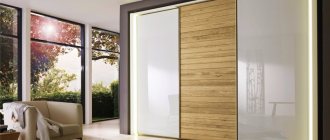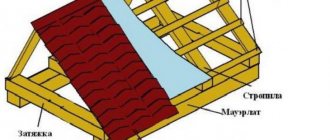The high density of urban development and the insatiable desire to use every square meter for construction are forcing architects and designers to resort to vertical gardening of walls. This allows you to soften the grayness of city streets with the green flowers of climbing plants.
Problems solved by landscaping vertical wall surfaces
Vertical gardens have become part of many innovative design solutions. The planes of walls, fences and fences, located vertically, are a good platform for landscaping houses and plots. Given the lack of space in courtyards, these ideas look not only original, but also a logical solution to bring the greenery of façade walls to the city streets.
Vertical vegetation not only looks like a natural and aesthetic decoration of the facade of the house, but also performs many useful functions. Green plants block some of the sun's ultraviolet radiation. The microclimate in the interior improves, making the air fresher and cooler. The need for conditioning is reduced. This allows you to save up to a third of your air conditioner's energy costs.
Plants lower the temperature of the external walls of buildings, reducing the flow of heat into the rooms. Foliage filters sunlight, creating unusual wall patterns and a playful mood. If deciduous vegetation is used for landscaping, then in summer the rooms will be shaded, and in winter sunlight will freely penetrate into the house.
Vertical gardening of walls enriches the surrounding air space with oxygen, creating more comfortable living conditions. Foliage absorbs sound: studies show that green plants on the facade reduce background noise by up to 50 dB. So street noise and traffic sounds will not interfere with the privacy of the residents of the house.
The exterior of the building may change colors depending on the time of year. This is achieved by using various plants and flowers for landscaping, which, when in bloom, will transform the façade of the building beyond recognition. Flowering plants will attract bees and other insects, which will create a unique atmosphere of unity with nature.
Cultural center CaixaForum Madrid in Madrid (Spain)
Cultural center CaixaForum Madrid). | Photo: espanarusa.com/mundandy.com.
The rather popular art center CaixaForum Madrid is located almost next to the famous Prado Museum, but this in no way distracts visitors, quite the opposite. After the ingenious reconstruction of an old power plant, this object turned into not just a cultural center, it became the first building in Spain to have a vertical garden on one of its walls.
More than 12 thousand plants fit on a relatively small area of the wall (CaixaForum Madrid, Spain). | Photo: mundandy.com.
Such an unusual project was developed by the architectural bureau Herzog and de Meuron, and the “living façade” was created by the French botanist and landscape designer Patrick Blanc. Now this building and part of the neighboring house are decorated with more than 15 thousand plants of 250 species.
Vertical Gardening of House Walls – what is it?
Vertical gardening is a very fashionable trend in landscape design in the West today. The eternal problem of “grandmother” - Europe - scanty land plots - forces Western gardeners to raise their heads to the sky, looking for free square meters there. And they find it, I tell you, and do this! But it's better to see it once.
Some of them are simply masterpieces of landscape art, and it is almost impossible to reproduce them without special instructions and equipment. But others are quite simple vertical flower beds. Landscape design will only benefit if you use at least one of the elements of vertical gardening when creating it.
In addition to vertical flower beds, it includes:
- The simplest option is plants that climb along the walls of buildings (knotweed, for example);
- Creepers on wallpaper, arches, pergolas;
- Hanging boxes, flowerpots, containers;
- Hedges.
Types of supports
To create a vertical composition in a vertical gardening design, you need a structure that will support the flowers. The following options are used for it:
- Trellis are long posts of suitable height. They are often used for zoning an area, to hide unsightly places or for decoration purposes. Trellis are made of metal, plastic or wood. For production, improvised materials are often used.
- The arches represent passages between zones of the site, emphasizing their different purposes.
- An obelisk is a small, free-standing structure. Often used in garden design as a support for roses.
- A pergola is a light gazebo. This word also refers to an extended corridor of gratings. Such designs allow you to hide from direct sunlight.
- Vertical flower beds can be created using several boxes stacked on top of each other.
- Special phytomodules for vertical gardening are produced. They are a flat structure that contains containers for plants. They can be used both for interior decoration and for outdoor use.
- There are also other types of supports. For example, a building wall, a fence, part of a garage or barn can be used in this capacity. Such landscaping is used not only for private houses, but also for the design of urban buildings.
Pros of vertical gardening:
- BEAUTIFUL . Living texture for wall decoration, and various color combinations.
- CURRENT . It will allow you to be special, and for public institutions to stand out among competitors and get more profit.
- HEALTHY . Plants absorb toxic gases and clean and cool the air. Have a positive effect on mood.
- GOOD ACOUSTICS . Plant leaves influence the attenuation of sound in a room by absorbing and dispersing it
A vertical flower bed is, in principle, the same containers of various shapes, which when combined form an interesting green or flowering canvas; it could be an ordinary flower bed if it were placed horizontally.
Consequently, these flower beds are created from containers with plants arranged in tiers. They can take the form of a wall, sculpture, screen or pyramid. Today, similar designs are sold in Ukraine, both for the garden and for the home. Yes, yes, a vertical flower bed can be easily installed on the wall in the bedroom, living room or even in the bathroom. And they are called phytopictures (those that are smaller) and phytosthenams (those that are larger).
But I digress from the topic. Today we are talking about vertical flower beds in the garden. These structures can be purchased (the most advanced ones have built-in drip irrigation systems) separately or together with plants, or you can make them yourself. For example, a flowerbed-tower with petunias.
Full-fledged Forest City in Liuzhou (China)
China is building a unique “forest city” designed by Stafano Boeri Architetti. | Photo: hdfashion.tv/vertaki.com.ua.
The creator of the vertical garden concept and his architectural bureau Stafano Boeri Architetti went even further. Now their ambitious plans include the construction of an entire city, the buildings of which will be covered with real forests. No matter how fantastic it sounds, such an extraordinary concept is already being implemented in the south of China, in the Liuzhou region. The country's authorities have allocated over 175 thousand square meters for the construction of the city of the future. m of land to improve the environmental situation in Liuzhou.
All buildings of the “forest city” will harmoniously fit into the existing landscape. | Photo: travelask.ru/vertaki.com.ua.
During construction, the features of the landscape and local ecosystem were taken into account. Therefore, residential buildings, office centers, government agencies, hospitals, schools and cultural and entertainment centers covered with trees are harmoniously integrated into the environment so as not to disturb the existing natural balance. It is planned that more than 40 thousand trees and about a million other plant species will be planted at all facilities and free territory of the city, which will be able to produce 900 tons of oxygen, absorbing over 10 thousand tons of carbon dioxide.
What plants to choose for vertical gardening?
Inventive gardeners have even learned to grow vegetables in vertical flower beds. In this case, of course, they are called not flower beds, but vegetable gardens. Imagine how many vegetables, herbs and herbs can be grown right in your pockets! More precisely, on such special hanging structures with pockets, which are hung on the wall of a house, barn or any other building.
You can sew it yourself or buy a shoe hanger in a store and attach it to a piece of pipe or cornice. The fabric must be water-permeable. If not, you can make small holes to allow excess water to drain through them. There should be a small container located below where the water will drain after watering. This is the case if such a vertical city is located not on a garden fence, but on a balcony, for example. We fill the pockets with compost, then plant seedlings in them. Plants can also be sown with seeds.
The following plants are suitable for vertical flower beds:
- Popular vines (maiden grape, clematis, morning glory, etc.);
- nasturtium;
- petunia;
- ferns;
- asters;
- dahlias;
- majors;
- many other plants.
When choosing them, you need to consider the following factors:
- Small root;
- compatibility;
- Uniform requirements for the level of humidity and the presence of sun.
https://sempochta.com.ua/ – the best selection of seeds and seedlings by mail
What plants can be used?
All suitable plants can be divided into:
- Decorative deciduous.
- Curly.
- Blooming.
- Unpretentious.
In the photo, decorating a house with plants in modules
You must choose any type by first answering 3 questions:
- Are you planning to place it in soil, hydroponics or on a panel? Spoiler: only stabilized moss is suitable for the latter.
- How well lit is the area of the wall you want to decorate? Is it located opposite a window, to the side of it, or in a shaded area?
- Who will plant the plants and care for them? The choice of cuttings depends on the experience of the grower.
The photo shows moss in the decoration of a loft-style room
7 suitable options for vertical gardening:
- Scindapsus. A fast-growing vine can be monochromatic (light or dark) or variegated. For dense vertical gardening, it is enough to plant several sprouts in a row. Looks great both on its own and paired with other green brothers planted nearby.
- Monstera. When planted in the ground, it grows quite quickly, so if you don’t want to live in the jungle in a year, choose small-leaved species. An excellent option is a punched or oblique one.
- Spathiphyllum. A blooming sprout with lush narrow leaves will decorate the wall. Requires special conditions: does not like drafts, needs high air humidity.
- Ivy. By timely guiding and pruning this climbing flower, you can create a beautiful carpet on the wall. For a more decorative look, mix different types: variegated, plain.
- Aglaonema. Large bright leaves and absolute unpretentiousness make it an excellent decorative addition to other plants located vertically.
- Asparagus. A lush flower whose branches resemble spruce. Small leaves will perfectly complement the picture created by the large-leaved flowers listed earlier.
- Fern. If you build it into the composition and attach rosettes with carved long leaves in empty places, you will achieve a noticeable contrast of textures.
In addition to the listed types, various succulents (ideal for the office) and herbs (option for the kitchen) are planted in phytomodules.
Pictured is scindapsus in the bathroom
Advantages and disadvantages of vertical flower beds
First, about the pros. This:
- Highly decorative and variety of organization options;
- Saving space, which is of great importance for a small yard;
- Ability to move from place to place;
- Minimal care. You don’t even have to water when organizing a drip irrigation system. From time to time – pruning of plants and periodic feeding.
But there is also a fly in the ointment. It is the same as in the case of vertical beds. Namely:
- Without drip irrigation you will have to water very often. Once you missed it in the heat - and that’s it, goodbye, beautiful vertical flower bed;
- The limited volume of soil significantly narrows the range of plants that can be used for vertical flower beds;
- Mandatory feeding. Without it, plants will wither over time;
- Perennial flowers are not very suitable for such flower beds, because in winter the soil in small containers tends to freeze. The solution is either annual plants, or wintering the entire structure with perennials in a suitable room.
Methods of green construction on the site
Over many centuries, a huge variety of options and methods for vertical gardening of adjacent areas, walls and premises have accumulated. Among them, every zealous owner can find a suitable one and implement it with his own hands, creating a beautiful blooming green ensemble and without spending significant financial resources.
Used ready-made structures and homemade devices
In order for vines and climbing crops to grow upward, supports were invented for them, having different shapes and purposes. These structures can be divided into several main groups.
Arches of various types
Arched vertical gardening is a semicircular or straight overlap between two supports. It is made of metal, wood, stone or brick, concrete. Arches are not placed anywhere in the garden, but above the paths, at the entrance to the garden or to a part of it, a separate area. Arches are designed to fit through, so there are special sizing requirements. A person should pass through the support freely, parts of the vines should not touch clothing or block the passage, spacious high arches fill the garden with air and create a romantic atmosphere.
The shape of the arches can be round or triangular, complex in shape. There are massive and openwork options. During construction, the strength should be calculated so that the support can withstand the load and weight of the vine.
Arch is a great option for romantics
An excellent solution would be a cascade of semicircular arches with blooming roses, forming a beautiful and fragrant corridor for walking.
Metal gratings
Forged openwork metal gratings are already a decoration of the garden. They are attached to the walls or between the supports of the pergola, they make up the spans of the fence for the hedge, you can install the trellis separately, assemble a gazebo from several modules, along which grapes or clematis will climb.
Phytomodules are hung on a steel mesh, and additional containers are attached for planting hanging crops for vertical gardening.
The shape of the cells can be either rectangular or any avant-garde shape or with a floral pattern or curls. Using metal paints, you can give the structure the desired shade that is in harmony with other elements of the surrounding landscape or interior.
The lattice is an original decoration of the yard
Popular articles Landscape design planning for a country plot on 3 acres
Hanging containers
Hanging flower beds for vertical gardening are traditionally used in combination with floor and wall flower stands. For planting in them, ampelous plants are suitable, for example, pelargonium or petunia, strewn with flowers or lush greenery and hanging down.
If you choose the right flowers and containers for them, you can create a unique interior
Hanging containers look beautiful on the balconies of city apartments, in parks on poles, they are placed on walls and terraces; a great option would be to hang a phytopan on the wall in the form of felt pockets or wooden pallets with containers for soil, or hang flowerpots on the veranda.
This decoration gives the house a special charm
Pergolas
These oldest elements of landscape architecture, supports, come from Italy, where they are very popular and are present on almost every estate. Vertical gardening with the help of a pergola performs several important tasks at once:
- combines different elements in the garden into a single ensemble;
- masks the desired objects and buildings;
- denotes a passage or entrance to a garden area;
- creates a green room or just a shady corner for relaxation;
- decorates the territory, gives it a certain style.
Four support pillars, usually made of wood with a ceiling at the top, with trellises along which vines climb - this is the simplest pergola. The minimum height of the supports is 2.5 m, and the width is 3–3.5 m. Then the design looks proportional. Massive pillars made of timber, stone, metal or brick require installation on a foundation or special supports.
A kind of gazebo with flowers instead of a roof is a great place to relax
Trellis
These lightweight screens or screens made of wood serve as support for climbing annuals and perennials in vertical gardening, and also zone the space and block outbuildings or a private area by the pool from view.
A trellis is a wooden plank 2–3 cm thick, fastened in the form of a lattice with diamond- or square-shaped cells, to which plant shoots cling. Support pillars are dug into the ground and concreted to support the considerable weight of overgrown shrubs or vines. The height of the trellis reaches 7 m.
With the help of a chapalera you can zone the space











